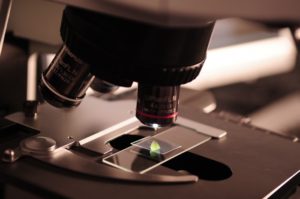I might be a little late to the science party, and maybe everyone else has already gotten over this discovery, but I sure haven’t. Back in March (ancient history, I know), scientists discovered a new maybe-organ, the interstitium. Researchers originally called this newly discovered tissue type an organ, but there has yet to be a consensus in the medical and scientific communities about that. There’s no universally agreed-upon definition of what an organ actually is, and no one can seem to decide on how many organs humans have to begin with. What the interstitium is, however, is pretty cool no matter what you call it.

Until this discovery, it was as though there were a wall of collagen that surrounds tissues and organs, but new microscopic imaging techniques have allowed researchers to see that this is not actually the case. These walls are actually bundles of tiny fluid-filled collagen tubes. No one saw them before because the way microscopic slides are prepared for viewing causes the fluid to come out and the tubes to collapse, making them look like a solid wall. The method they used allowed the researchers to view living tissue within the body instead of removing it and looking at it under slides. This method involved freezing the tissue while it’s still in the body, and then removing it so the tissue spaces don’t collapse as easily.
The collagen tubes of the interstitium have been discovered all over the body, including the skin, digestive system, the bladder, and tissues surrounding muscles. We’ve known for a while that about one third of the fluid in the body is in between cells, called interstitial fluid, but the discovery of these collagen tubes indicates that the fluid is contained more purposefully than just “being” between cells. The most important thing this new discovery makes is more questions. Doctors and researchers are now able to look into a multitude of questions that, before this discovery, no one would have thought to ask.
One hypothesis is that this network of collagen helps cushion our skin and other organs from damage due to impacts. Another theory is that the interstitium is to the lymph system what capillaries are to the circulatory system.
One area of inquiry that seems quite promising for research is looking at how the interstitium influences how cells move throughout the body and the lymph system. This area of research could have significant influences in understanding how cancer metastasizes, and potentially in being able to treat and prevent those metastases in the future.
